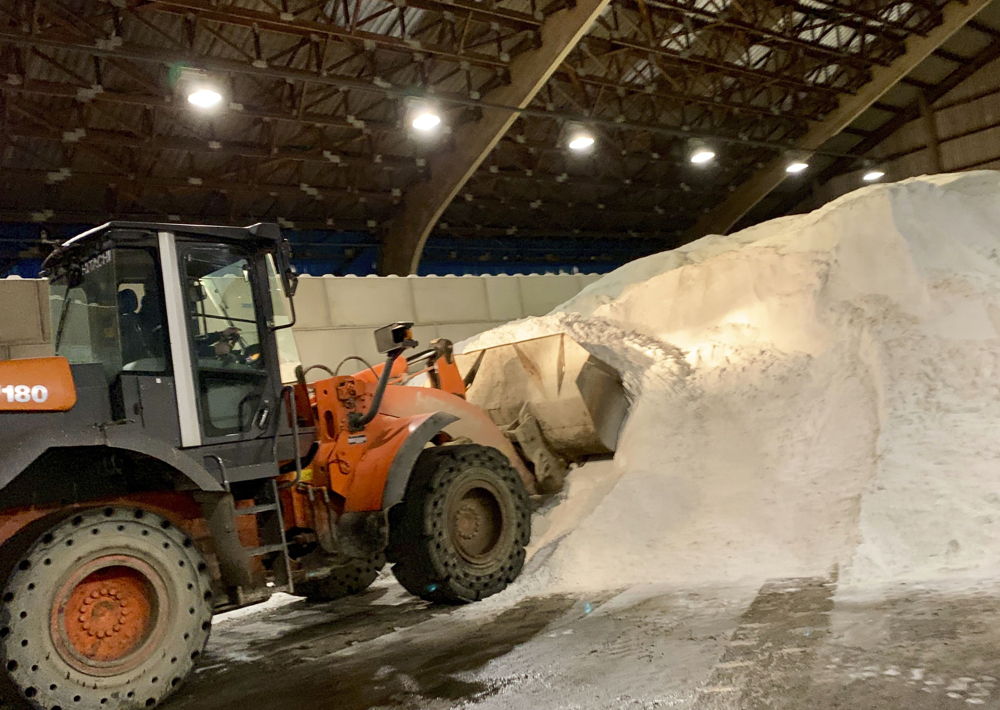Since the first snow was recorded in Belgium on Friday morning in the Ardennes, more snow has fallen across Belgium, resulting in the Royal Metereologic Institute (RMI) putting out a code yellow warning for slippery roads due to the wintry weather conditions.
Starting overnight between Sunday and Monday morning, a "precipitation zone" dragged across Belgium and will continue to shift over the country throughout the day, covering certain areas (mostly those located around 150 metres in altitude in the southeast) with a dusting or blanket of snow. In the centre of Belgium, there will be melting snow or temporary snow that could remain.
"A snow cover of 1 to 5 cm may form in most places. In the province of Liège, the south of the province of Limburg and the east of the provinces of Flemish and Walloon Brabant, this could possibly reach between 5 and 10 cm locally," the RMI wrote on its website.
The warning of slippery roads is in place until Tuesday at 09:00, as later in the day, the softer air that will gradually move across the country will see melting snow change into rain and the snow cover will melt away in most places. Only in the Ardennes, the snow will remain in most places.
On Tuesday and the following days, showers are possible at times, while temperatures will be above freezing in most places, meaning the risk of slippery roads is lower. More snow is currently predicted for next weekend, but the trend is still uncertain.
Taking precautions
In light of this warning and the cold temperatures, preventive gritting is already being applied in some provinces, including Limburg and the Brussels-Capital Region, where Brussels Mobility announced that the winter road season has begun and that it will carry out the first preventive gritting tonight to "ensure the safety of road users."
"Our aim is to guarantee the mobility and safety of all road users: motorists, motorcyclists, public transport passengers, cyclists, pedestrians..., even in very bad weather conditions," said Elke Van den Brandt, Brussels Minister for Mobility and Public Works.

A pile of salt that is used for preventive gritting. Credit: Brussels Mobility
A full gritting of the entire regional road network in the Capital Region (which comprises more than 800 km) takes 3.5 hours and requires 85 tonnes of salt. There are 18 additional circuits for removing snow from cycle paths with smaller machines.
At the same time, we also want to reduce the impact of our gritting. For example, the salt is no longer transported by road but by waterway via the Port of Brussels."
The gritting services of the Agency for Roads and Traffic (Wegen en Verkeer) in Flanders are monitoring the situation and driving out where necessary, and urges people to check the website of the Flemish Traffic Centre before hitting the road on Monday.
Related News
In Wallonia, where snow cover is most likely, public transport company TEC has activated its "bad weather" plan in the Liège-Verviers region, meaning several bus lines were cancelled or diverted until roads were cleared and the ice has thawed.
The Walloon road action unit — made up of the Walloon Regional Crisis Centre (CRC-W), the Perex centre and the federal road police — is urging road users to be careful, especially on the secondary network.
"It is important to be vigilant, especially in Hainaut, Walloon Brabant, the Hautes Fagnes and the Ardennes," it said, asking people to consult the websites http://trafiroutes.wallonie.be or http://www.inforoutes.be to obtain information on traffic conditions before taking to the road.

